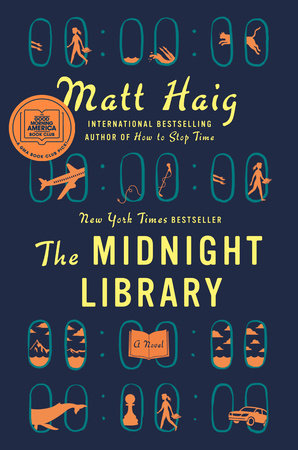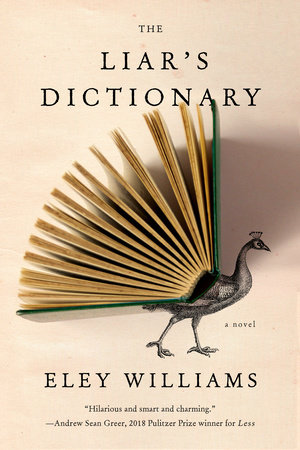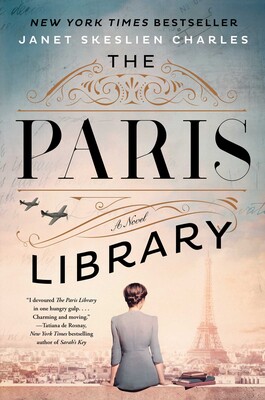As we approach one year under our strange conditions, I find I’m weary. Of staying at home. Of juggling grad school and parenting and an internship and other work. And I’m tired of being tired.
For a long time, I didn’t have the attention span for novels. My son was younger, and I had found that non-fiction was easier to put down and pick back up. But now that he’s self-sufficient, and I spend so much of my days focusing on articles and textbooks about library science, I need fiction to help my brain relax and recover – from work, from separation, and, lately, from the storm that shut down Texas.
Of course, even when I’m reading novels, I find that I’m drawn to those that write of literary lives. Here are three that touched on my library science studies while exploring worlds vastly different than my own.
[Sidebar: I have been an avid reader my entire life. To see other reviews of my latest reads, visit my profile at Goodreads.]

The Midnight Library, by Matt Haig
www.penguinrandomhouse.com/books/575653/the-midnight-library-by-matt-haig
The book focuses on Nora Seed, a woman that has decided she no longer wants to live. She commits suicide fairly early in the book; after she loses consciousness, she finds herself in a library with her high school librarian. Of course, this library is different: It houses her Book of Regrets, as well as all of the variants of what her life could have been with different choices: If she had become a professional swimmer, if she had married the man she left two days before their wedding, if she had moved to Australia with a friend.
The book is an excellent exploration of the “what if”s we all consider – would our life really have been better? Or would it just have been different, with other challenges? A thoroughly engaging novel that I could not put down.

The Liar’s Dictionary, by Eley Williams
www.penguinrandomhouse.com/books/656259/the-liars-dictionary-by-eley-williams
Organized into 26 chapters headed by the definitions of obscure words, this novel is a wonderful escape for logophiles like myself that love little-known words and their histories and meanings. The location is consistent – a publishing house in London – but the narrative jumps back and forth between the creation of a dictionary in the late 1800s and an intern digitizing the remains of the unpublished masterpiece in modern times.
The central mystery is the discovery in the modern period of a variety of mountweazels in the dictionary that date back to the narrative in the 1890s. The intern begins hunting for these extraneous words while trying to figure out why a clerk would have added them; we get clues as to why in the older narrative. As the story jumps back and forth, both narrators display their love of language while navigating the highs and lows of life in each era.

The Paris Library, by Janet Skeslien Charles
www.simonandschuster.com/books/The-Paris-Library/Janet-Skeslien-Charles/9781982134198
Last summer, I read about the American Library in Paris for the first time. Celebrating its 100th anniversary in 2020, the article in American Libraries explored the history of this subscription library, created after the First World War, that became an essential part of the literary resistance to German occupation during the World War II.
This novel, like The Liar’s Dictionary, jumps between two time periods, but in this book, they feature the same woman, Odile Souchet. In 1939, she is hired as a librarian at the American Library, and the one storyline follows her experience as war approaches and Paris is occupied. In the 1980s, she is now a widow, Odile Gustafson, who moved to Montana as a war bride. Her young neighbor befriends her and begins to learn about her past. The story seamlessly jumps back and forth, creating an engrossing narrative that kept me reading long after my bedtime.
Alford, H. (2005, August 22). Not a word. The New Yorker. https://www.newyorker.com/magazine/2005/08/29/not-a-word
Kniffel, L. (2020, May 1). We’ll always have the American Library in Paris. American Libraries. https://americanlibrariesmagazine.org/2020/05/01/well-always-have-american-library-in-paris/
Penguin Random House. (n.d.). Cover of The Liar’s Dictionary [Image]. https://www.penguinrandomhouse.com/books/656259/the-liars-dictionary-by-eley-williams/
Penguin Random House. (n.d.). Cover of The Midnight Library [Image]. https://www.penguinrandomhouse.com/books/575653/the-midnight-library-by-matt-haig/
Simon & Schuster. (2021). Cover of The Paris Library [Image]. https://www.simonandschuster.com/books/The-Paris-Library/Janet-Skeslien-Charles/9781982134198